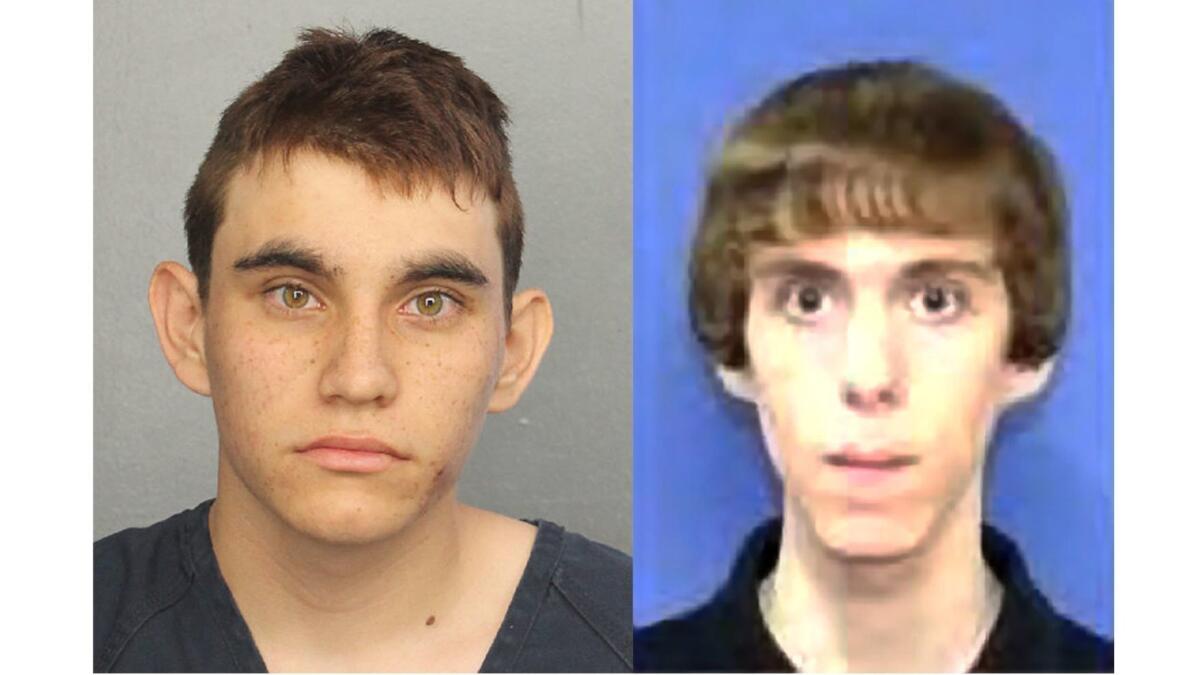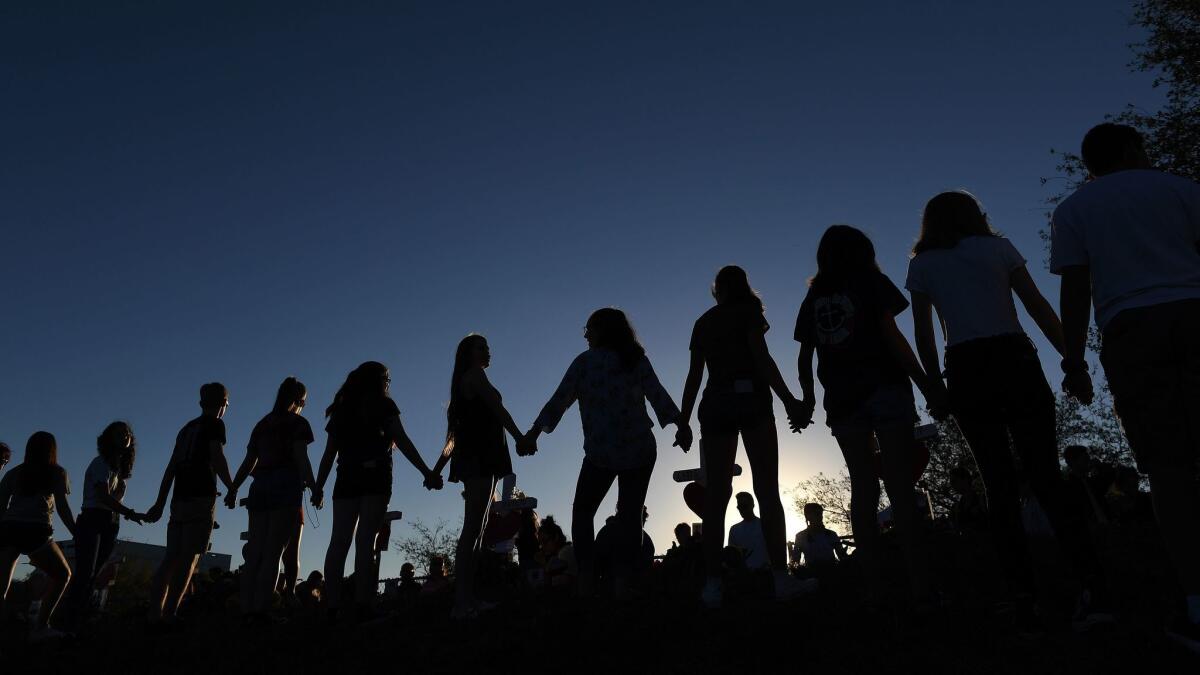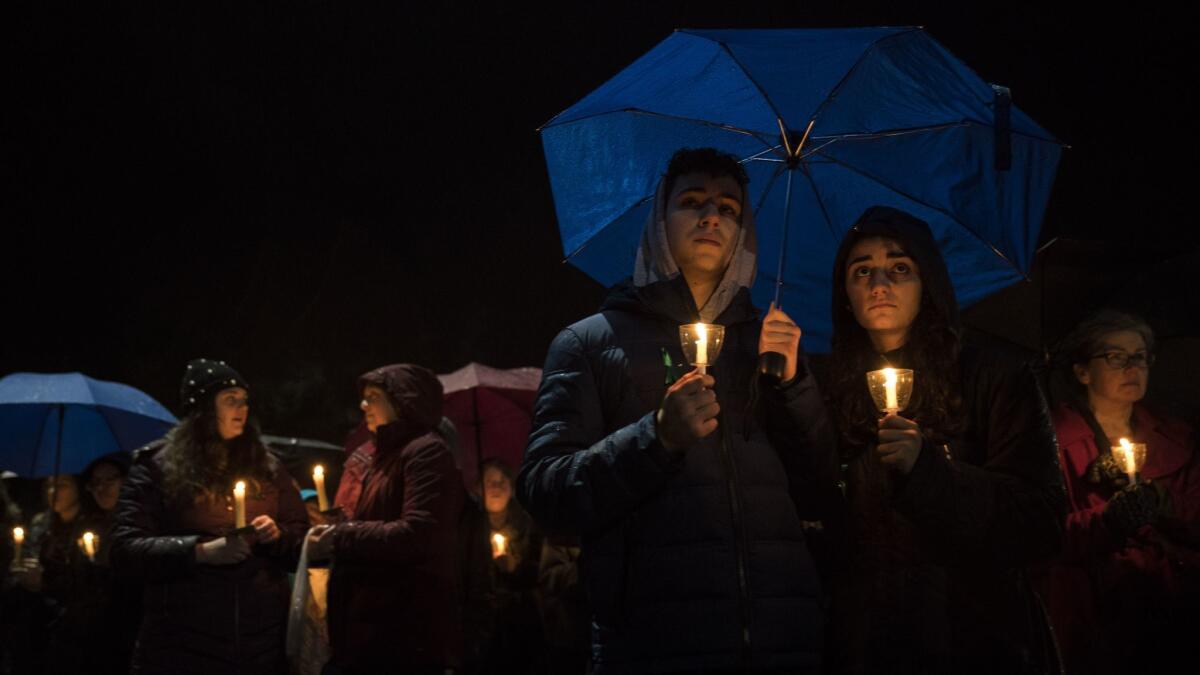Q&A: What the Florida school shooting reveals about the gaps in our mental health system

After Adam Lanza burst into Sandy Hook Elementary School and gunned down 20 students and six educators, Connecticutâs Office of the Child Advocate tapped Julian Ford to help make sense of the shooting. A professor of psychiatry at the University of Connecticut School of Medicine and a practicing psychologist for 35 years, Ford served on an expert panel that conducted a detailed review of Lanzaâs brief life to look for âany warning signs, red flags, or other lessons that could be learned.â
The resulting report painted a picture of an odd, sensitive child with significant communication difficulties who became an anxious and withdrawn adolescent. By the time he became a young adult, he was depressed and profoundly isolated, connecting only with his mother, online games and websites that trafficked in extreme violence.
At every turn, the report saw missed opportunities to treat Lanzaâs multiple interpersonal and mental health difficulties â he had been diagnosed with autism spectrum disorder, obsessive-compulsive disorder and severe anxiety â and to draw him out of his profound isolation. After years of having fallen through the cracks, Lanzaâs shooting rampage on Dec. 14, 2012, underscores the need to âidentify and assess youth from a very young age, the importance of effective mental health and educational service delivery, and the necessity of cross-system communication amongst professionals charged with the care of children,â the report concluded.
Ford spoke with the Los Angeles Times about the emerging picture of Nikolas Cruz, the confessed gunman who shot and killed 17 people at Marjory Stoneman Douglas High School in Parkland, Fla., on Feb. 14 and his similarities to Lanza.
What parallels do you see between Nikolas Cruz and Adam Lanza?
Each case and each individual is unique, of course. But what struck me is both were extremely isolated young men who didnât feel they fit in, and felt a profound sense of alienation from virtually all human relationships.
That kind of isolation â that sense of not fitting in with a peer group â in no way accounts for an act of violence. But it is very seriously problematic. As that isolated young child becomes a young adult, he is not going to be able to recognize the impact of actions he might take or understand how they might hurt others â from words or small gestures to large, much more consequential actions.
Cruz is reported to have put a swastika on his backpack, a gesture his mother said he did not understand. Lanza was judged by a Yale psychiatrist to require intensive help âusing communication that is appropriate to setting, listener, context, or purpose.â
In both cases, this is about not getting other peopleâs perspectives and the fact they might see things differently. That includes not understanding that their actions or the symbols they wield might be hurtful.
One issue for both these young men seems to be a kind of emotional numbness. We certainly associate that with several psychiatric disorders, such as post-traumatic stress disorder. But it can happen to people who simply are not really tuned into their own or other peoplesâ emotions.
Emotional literacy or intelligence is really very crucial for young adults. They have to be able to recognize that other people can feel injured, can have other perspectives, even when they donât feel itâs warranted. That perspective-taking, or empathy, is lacking in Cruz or Lanza. Itâs a very serious psychological and emotional impairment.

The common denominator is the detachment, the isolation, the emotional disconnection. Thatâs a challenge for every teen transitioning into adulthood, and most kids make that successfully because theyâre either able to figure out for themselves or they have adults in their lives who can help them learn to connect. But some parents or caregivers, even thoughtful and caring ones, donât know what to do to help a child to fit in. We really, as a society, need to think carefully about how we help parents in that predicament.
What role does the online world play in that process?
Itâs a blessing and a curse.
Online media provides a wealth of opportunities to interact and connect. But they do not provide the basis for personal relationships. Most adolescents and young adults come to recognize thereâs a fundamental difference between going online and actually having a close personal relationship. But for kids who are not fitting in, thatâs a very attractive alternative: You can hide or disguise who you are and what youâre thinking.
Adam Lanza became drawn into online communities that were very toxic. He appeared to be trying to substitute those virtual interactions for actual personal connections.
While weâre still learning about the situation with Nikolas Cruz, itâs quite possible that he, too, was trying to find some sense of personal connection through social media, but instead found encouragement for hate and even violence.
Both kids appear to have had identifiable mental health problems. How is it that they seemed to fall through every crack?
We all need to think about what are we asking of the mental health system. The mandate to providers is to help individuals and families when theyâre having acute psychological problems, and to help individuals with more long-term persistent problems â such as schizophrenia, bipolar disorder or chronic severe depression â to maximize their quality of life and their safety.
But in between those acute crises and chronic psychiatric disorders, there are many individuals who go through their childhood and adolescence feeling disconnected from person-to-person relationships, or essentially have no meaningful personal relationships. Conventional mental health treatment is really not designed to address this.
Thereâs this big gap, and that crack is where these young men seem to have fallen through.
It sounds like there could be a lot more kids like them.
There are a lot of people like them who are suffering and need help. They may be recognized as having problems, as was the case with both Lanza and Cruz, but are able to maintain just enough of the appearance of fitting in to be viewed as needing social or educational accommodations, but not therapeutic help. Their parents often make heroic attempts to help them âget by,â while either not recognizing the severity of their childâs problems (as appeared to be the case with Mrs. Lanza) or feeling helpless and becoming detached emotionally from their child (as appeared to be the case with Mr. Lanza).
Although these young adults often are described as having a personality disorder, in most cases this is not fundamentally a problem of personality, but of social communication, emotion regulation, information processing, decision-making and problem-solving. Their personalities have not fully formed as a result of those difficulties. Other people tend to feel uncomfortable and unable to connect with them. That results in a vicious cycle in which their difficulties push away the very people from whom they need connection.
The mental health system is not really funded or mandated to help people who are profoundly disconnected but essentially not intensely symptomatic. So theyâre easily missed.
Still, they are struggling, and the people in their lives often donât know how to get them on track. They tend to be the wheel thatâs not squeaky enough. And in very rare cases, the outcome is violence.
Cruzâs public defender described him as a âbroken human being.â Do you see Cruz and Lanza as broken?
When people struggle because they do not relate to other people, or when people find them difficult to get along with, those individuals typically get labeled as âbrokenâ â or technically, with having personality disorders. I donât think itâs helpful. Itâs very stigmatizing. It leads others to conclude they have a disorder they can never recover from.
The common denominator is not that they have a broken personality, but they have been unable to master how to relate to other people, especially when other people do things they donât understand or find hurtful. And thatâs a person whoâs likely to be viewed as odd and shunned or bullied, and as a result to withdraw or occasionally to lash out.
Both of these young men relied on their mothers to buffer them from the world. But Lanzaâs mother was considering a move that would have taken him away from his childhood home, and Cruzâs mother died in November. How might loss, or the prospect of it, affect troubled young adults?
There is a definite parallel here. Both of these young men had very important relationships with their mothers. When their mothers were no longer present or were less able to provide the kind of balance and support both young men clearly needed, their connection to the rest of society â to other human beings â is frayed or even lost.
Itâs not all about mothers. It can be a father, a teacher, a coach. But if thereâs only one relationship, and that relationship has to fulfill all those needs, that puts a kid at risk. No caregiver can alone be the connector to the rest of humanity, and no caregiving relationship can last forever.
Had you known much of what you learned about Lanza, could you have predicted he was capable of such violence?
I absolutely would not have predicted heâd have been capable of such extreme violence, and people who knew him well and who have studied prediction of violence much more than I have say there was no way they could have predicted it.
What we could predict is that he was going to struggle with conflict and isolation and withdrawal. And that as that struggle became more profound and exhausting, he would break down in some way.
So what could have been done differently?
One thing that increases the likelihood an Adam Lanza or a Nikolas Cruz will act on violent impulses is access to weapons that make that possible. And secondarily, involvement in groups â whether on the internet or any other forum â that strongly endorse violence as a solution to problems.

When you have the combination of those two things, in a person whoâs confused, who has difficulty feeling empathy toward others, and who feels hurt and aggrieved by others, that individual may then decide the solution is to be the person who has the power, and be the one who takes action. He may conclude that violence is the only solution.
Fortunately, in most cases, people who have come to that extreme juncture donât have the access to weapons, or there are people or institutions that intervene to help them.
But unfortunately, itâs impossible for any of us to predict who is going to go from being troubled and isolated to actually harming others.
It must be very humbling.
It is. It really means we canât rely on prediction and identifying the bad guys. Because weâll misidentify some who arenât bad guys, and weâll fail to identify others who may become bad guys.
We have to shift from a strategy of trying to find the bad guys and neutralize them to a framework of identifying what the core dilemma is, and what we can do on behalf of the many, many individuals who grow up with only a tenuous connection to other people and find themselves confused by and disconnected from their own emotions. Most of these people will never be violent. But they deserve and require some additional assistance beyond that which is now available.
This interview has been edited for length and clarity.
Twitter: @LATMelissaHealy
MORE IN SCIENCE:
More than half of U.S. gun owners store at least one firearm without any locks, survey reveals
Case closed: Oldest known cave art proves Neanderthals were just as sophisticated as humans
An amateur astronomer testing a new camera happens to catch a supernova as it's being born




